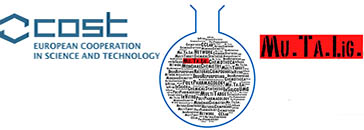
General information
| Name: FRANCISCO JAVIER |
| Surname: PAVON-MORON |
| E-mail: javier.pavon@ibima.eu |
| Cell phone number with international prefix: +34 616474125 |
| Country: SPAIN |
| Affiliation: INSTITUTE FOR BIOMEDICAL RESEARCH IN MALAGA (IBIMA) |
| Gender: F □ M x |
| Year of the PhD title: 2006 |
| Personal web page: https://www.researchgate.net/profile/Francisco_Javier_Pavon-Moron |
| Previous COST participation: No x Yes □ |
List of 10 selected publications within last 5 years
| 1. Fresno et al., 2015. Novel oxazolidinone based PPAR agonists: molecular modeling, synthesis and biological evaluation. Journal of Medicinal Chemistry. Vol. 58(16), 6639-52. |
| 2. Decara et al., 2015. Treatment with a novel oleic-acid–dihydroxyamphetamine conjugation ameliorates non-alcoholic fatty liver disease in obese Zucker rats. Disease Models & Mechanisms. Vol. 8(10), 1213-25. |
| 3. Castilla-Ortega et al., 2014. 1-Oleoyl lysophosphatidic acid: a new mediator of emotional behavior in rats. PLoS ONE. Vol. 9(1), e85348. |
| 4. Wulff-Perez et al., 2014. Preparation, characterization and in vivo evaluation of nanoemulsions for the controlled delivery of the antiobesity agent N-oleoylethanolamine. Nanomedicine UK. Vol. 9(18), 2761-72. |
| 5. Moreno-Santos, Pavón et al., 2014. Computational and biological evaluation of N-octadecyl-N´-propylsulfamide, a selective PPARα agonist structurally-related to N-acylethanolamines. PLoS ONE. Vol. 9(3), e92195. |
| 6. Pavon et al., 2013. Evaluation of plasma endocannabinoids and their congeners as biomarkers of cocaine addiction: impact of psychiatric comorbidity. Addiction Biology. Vol. 18(6), 955-69. |
| 7. Decara et al., 2012. Elaidyl-sulfamide, an oleoylethanolamide-modelled PPARα agonist, reduces body weight gain and plasma cholesterol in rats. Disease Models & Mechanisms. Vol. 5(5), 660-670. |
| 8. Serrano et al., 2012. Obesity and the endocannabinoid system: is there still a future for CB1 antagonists in obesity? Review. Current Obesity Reports. Vol. 1(4), 216-228. |
| 9. Alonso et al., 2012. Antiobesity efficacy of LH-21, a cannabinoid CB1 receptor antagonist with poor brain penetration, in diet-induced obese rats. British Journal of Pharmacology. Vol. 165(7), 2274-2291. |
| 10. Pavon, et al., 2010. Oleoylethanolamide: a new player in peripheral control of energy metabolism. Therapeutic implications”. Review. Drug Discovery Today: Disease Mechanisms. Vol. 7(3-4), e175-e183 |
Main skills and expertise (up to 5)
| 1. Pharmacology of novel drugs using rodent models (mouse and rat). Preparation of solutions and administration (peripheral and central administrations). |
| 2. Behavioral characterization of drugs in rodent models (assessment for anxiety, depressive-like behaviors, social interaction…). |
| 3. Molecular Biology techniques: Western blot, qRT-PCR, immunohistochemistry… |
| 4. Cerebral micro-dialysis in vivo for molecular determinations and intracranial surgery. |
| 5. Statistical analysis of data |
Main equipment/facilities available in the participants’ lab (up to 5)
| 1. Western blot and qRT-PCR equipments |
| 2. Immunohistochemistry and Microscopy Unit |
| 3. Tissue culture room |
| 4. Animal Facilities with Mazes and Apparatuses for behavioral studies in rodents |
| 5. Metabolic and Drug self-administration boxes/cages for rodents |
Short personal activity proposal for the COST Action CA15135 (max 1000 characters)
|
My lab has been involved in the synthesis and characterization of novel compounds (usually dual ligands) based on lipid derivatives for the treatment of metabolic disorders and feeding disorders such as obesity. Our research activity is focused on the in vivo screening of these compounds using animal models (i.e., wild-type and knockout rodents) to identify relevant chemical entities after analyzing behavioral and metabolic effects. In the present COST Action, my scientific experience is related to the WG: Selection of biological targets and assessment of biological data. I consider that in vivo studies of multitarget drugs during the first stages of evaluation in preclinical models have the potential to offer conclusive insights about the nature of drugs and diseases. Certain side effects derived from central activity (e.g., drugs crossing BBB form systemic administration) and/or additional activity on different targets could be observed using preclinical models and tests. Appropriate approaches should be identified according to the multitarget drug activity and disease of interest.
|
Work Group preference: score from 1 (preferred) to 4 (not preferred)
| Work Group of the CA15135 COST Action | Score |
| WG1: Development of new chemical entities | 2 |
| WG2: Selection of biological targets and assessment of biological data | 1 |
| WG3: Development of chemical databases | 3 |
| WG4: Development of Computational methods for multiple ligand design and discovery | 4 |
